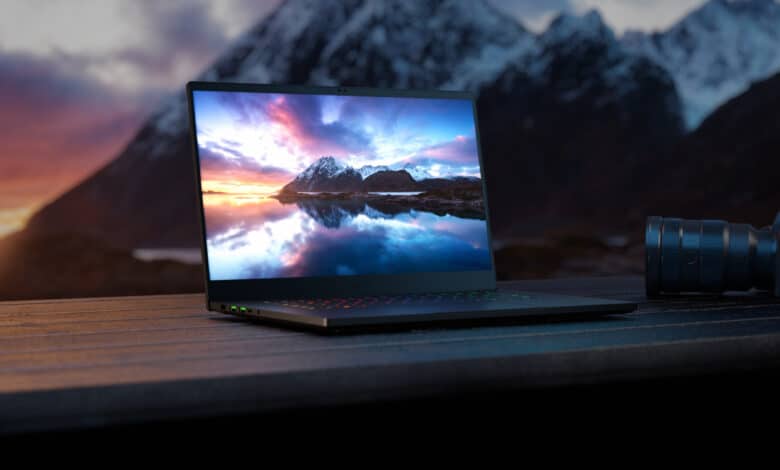
Razer is arguably one of the most iconic brands in gaming and is mainly known for their peripheral items. Besides the very popular keyboards and headsets, Razer also has a division of gaming laptops.
In this lineup are a few very special devices like the Razer Blade 15 with a 240 Hz OLED display. It’s a combination I haven’t seen anywhere before. You can find out just how unique this gaming laptop is in this Razer Blade 15 review.
Design & Workmanship
- Elegant design in black & green
- Surprisingly compact case made of anodized aluminum
- Sturdy workmanship
- Chroma RGB keyboard
- Large touchpad with a bit too much sensitivity
Design
Compared to many other gaming laptops, the design of the Razer Blade 15 is a bit more understated. The black case with clear edges and slightly rounded corners looks grown-up and modern. However, the glowing Razer logo on the back of the display gives the device the typical Razer look you would expect. On the front edge of the device is a small LED that glows green when the device is on and white when it is in standby mode. So you can quickly check if the laptop is shut down or still running in stand-by.

When opening up the notebook, you are first greeted by the large 15.6-inch OLED display, which is also impressive with narrow display edges. Below that is the laptop-sized RGB keyboard with individually controllable keys, as well as the black glass touchpad that cleverly blends into the Blade 15’s design.
Workmanship
The Razer Blade 15’s chassis is made of CNC-machined aluminum that features a black anodized finish. Accordingly, the gaming notebook weighs in at a hefty 2 kg.
Compared to many other gaming laptops, the Razer Blade 15’s case is not overly large. When closed, the device only has a thickness of 1.69 cm, which is damn little for a gaming notebook. This makes the Blade 15 not much thicker than the 1.45 cm thick Surface Laptop 4. Very amazing how Razer managed to fit the high-end hardware including a large battery into this case. However, a small case also makes it difficult to dissipate heat, so I am curious to see if Razer was able to adequately solve this problem.
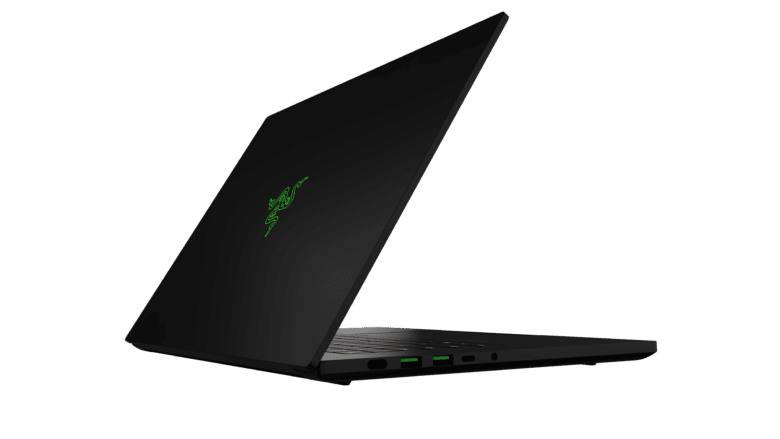
The build quality of the notebook feels extremely sturdy and robust. The screen hinge is stiffly adjusted and remains firm at any angle. Even with vibrations, for example in a car, the display does not wobble. Thanks to the weight, the Blade 15 can still be opened with one hand.
Input
Although the keys are made very flat, the typing feel of the Chroma-enabled keyboard is pleasant and has a certain depth. The pressure point of the switches requires less force compared to other laptop keyboards, which makes typing easier and more “flaky”. However, this can occasionally lead to “mistyping”. However, you get used to these features over time.
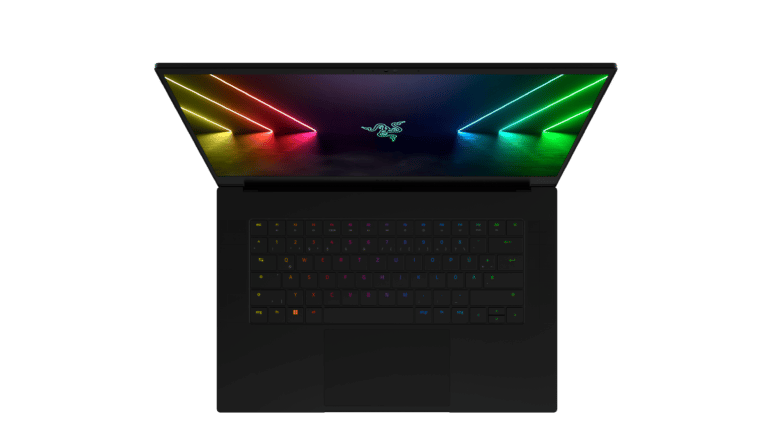
The Razer Blade 15’s touchpad measures 8 cm x 13 cm, giving it a surface area of 104 cm2. This doesn’t make it one of the largest – the trackpad on a MacBook, for example, spans an area of 160 cm2 – but it’s large enough that it doesn’t feel claustrophobic. I therefore have nothing to criticize about the size. I also like larger touchpads, but beyond a certain point, the comfort of use doesn’t improve any further.

However, the sensitivity of the trackpad is one thing that has caused me problems. When typing on the keyboard, there are often false “clicks” on the trackpad when the heel of the hand occasionally touches the pad. I have never had comparable problems on other laptops. The sensitivity of the touchpad can be changed in the Windows settings, but the false “clicks” also occurred at low sensitivity. Therefore, I hope that it can be fixed via a driver update in the near future.
Hardware
- Intel Core i9 of the 12th generation
- Notebook variant of the RTX 3070 Ti
- 16 GB DDR5 RAM
- 1 TB NVMe SSD
- Vapour Chamber cooling system
- Webcam with Windows Hello
- Loud stereo speakers with lack of bass
- Large port variety
- Wi-Fi 6E & Bluetooth 5.2
Specsheet
| CPU | Intel Core i9-12900H |
| GPU | NVIDIA GeForce RTX 3070 Ti (8GB GDDR6 VRAM) |
| Memory | 16 GB DDR5 @ 4800 MHz |
| Memory | 1 TB M.2 NVMe PCIe 4.0 x4 |
| Display | 15.6 inch (39.6 cm) QHD 240 Hz OLED, 1 ms response time |
| Operating system | Windows 11 Home |
| Connectivity | Wi-Fi 6E (Killer AX1690), Bluetooth 5.2 |
| Connectors | 1x Thunderbolt 4 (USB-C), 2x USB-C 3.2 Gen 2, 3x USB-A 3.2 Gen 2, HDMI |
| Battery and power adapter | 80 Wh LiPo battery, 230 Watt power supply |
| Dimensions | 16.9 mm x 235 mm x 355 mm |
| Weight | 2.01 kg |
| Webcam | 1080p, IR camera for Windows Hello |
| Audio | 3.5mm combo connector, 2x THX spatial audio stereo speakers, 2 array microphone |
The Razer Blade 15 variant I was provided with comes with Intel’s most powerful laptop processor at this point, the Core i9-12900H with 6 performance cores (P-cores) and 8 efficiency cores (E-cores). In addition, there is the notebook variant of the NVIDIA GeForce RTX 3070 Ti GPU. In order to utilize the full performance of the new processor, 16 GB of DDR5 working memory with a clock of 4800 MHz has been installed. These 16 GB are sufficient for gaming in most cases, and the performance gain from the higher clock rate is more pronounced than from more memory – but some professional software could benefit from more RAM. A 1 TB M.2 NVMe SSD is available as main storage, which ensures short load times and a responsive operating system.
I am very pleased about the possibility to replace both the main memory and the RAM. The dual-channel RAM slot supports up to 64 GB of working memory. M.2 SSDs with up to 4 TB of storage can be attached to the open PCIe 4.0 slot. The lifespan of the Razer Blade 15 can thus be extended by a few more years and the device can be upgraded according to its use.
Cooling
For cooling, Razer has installed a Vapour Chamber system that removes heat from the processor and graphics card. Razer explains that the Vapour Chamber allows the chassis to be thin, as the cooling efficiency is great this way. Therefore, two fans are also sufficient to supply the 83 fins of the heatspreader with fresh air. Nevertheless, the Razer Blade 15 can get quite loud under full load, which is probably unavoidable considering the installed hardware. However, the Blade 15 is whisper-quiet when idling or during typical everyday tasks like web browsing or working with Excel and co.
.
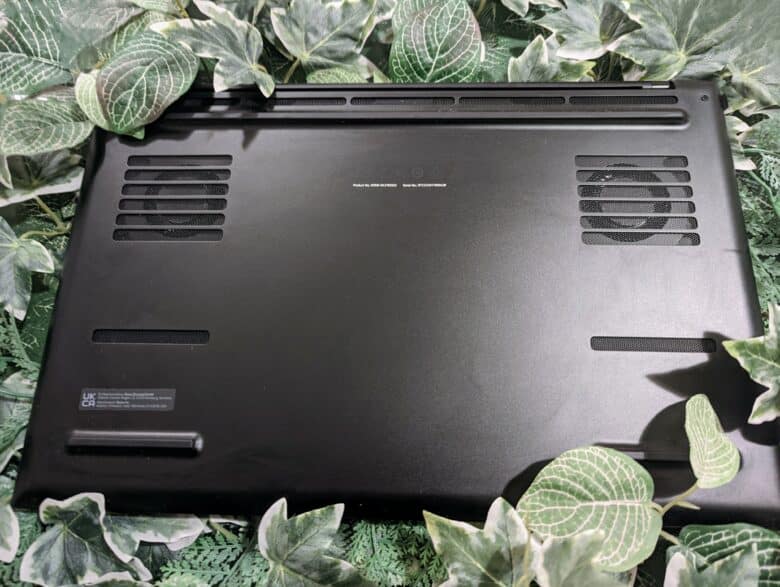
Webcam, microphone & speakers
A 1080p webcam is located at the top of the screen, as well as an infrared camera system that enables Windows Hello. Login and authentication via facial recognition are therefore also possible with the Razer Blade 15. The webcam supports a maximum frame rate of 30 FPS and delivers an acceptable image, as known from other laptop webcams. The same is true for the built-in microphone. It is always sufficient for video calls and phone calls with friends. However, I would recommend an external camera and microphone to those interested in streaming.

The stereo speakers with THX Spatial Audio can get surprisingly loud and still remain clear. Unfortunately, they just lack the necessary bass, which makes music sound flat and partly boring. For videos and series, I can be satisfied with them and here the lack of depth doesn’t bother me much. For gaming, I would advise headphones anyway, since on the one hand the sound is more immersive and on the other hand many acoustic cues are difficult to localize via speakers. You can activate emulated surround sound via the preloaded “THX Spatial Audio for PCs” app, which is interesting but more of a gimmick. There is also an equalizer here, which can be used to personalize the sound of the speakers somewhat.

Connectivity
Connectivity
Contrary to the general trend in the tech industry, Razer does not refrain from offering a generous number and selection of ports. In addition to two USB-C ports, one of which is Thunderbolt 4, there are three more USB-A ports on the sides of the Blade 15, as well as an HDMI 2.1 port for external monitors and projectors, and an SD card reader that might be of particular interest to photography-savvy users. The good old jack port for headphones and microphones need not be missed either.

The Razer Blade 15 can be charged via the proprietary charging port and the included power adapter with a charging power of 230 watts. In addition, the notebook can also be powered via USB-C. Here, the Blade 15 supports a maximum charging power of 100 watts via a compatible PD 3.0 20V power supply.

Wireless
For Wi-Fi connectivity, Razer has chosen the Killer Wireless AX-1690 modem. This supports the latest Wi-Fi 6E standard with a maximum speed of ~3 Gbps. Included in this modem are a total of two network adapters that allow connection to the router over two Wi-Fi bands. This allows the modem to intelligently distribute traffic between the two bands. Intel calls this their “Double Connect Technology (DCT)” and it is supposed to improve the latency of critical applications like games or video calls as well as increase the maximum download speed. In addition to Wi-Fi, the Blade 15 also supports Bluetooth 5.2, which enables low-energy audio, among other things.
Performance
- Current games possible on high graphics settings
- Strong CPU
- Slight bottleneck due to GPU
- Lightning fast SSD
Benchmark
With the i9-12900H and the laptop variant of the RTX 3070 Ti, the Razer Blade 15 is also suitable for the latest and most graphically demanding games on the market, as long as you don’t claim to play everything on the maximum settings.
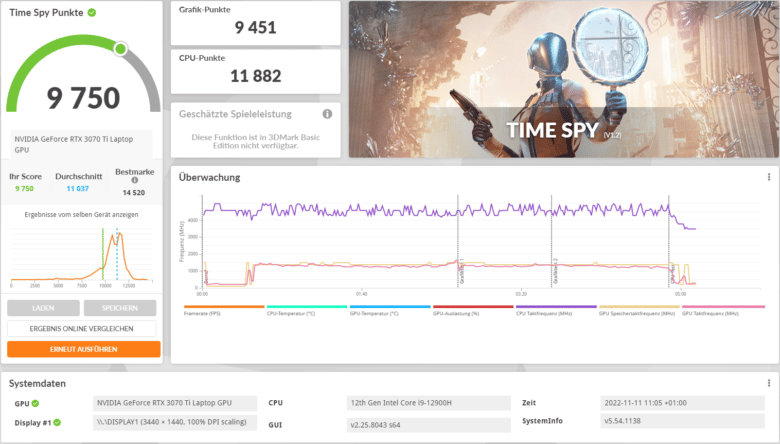
In the 3DMark Time Spy benchmark, my Razer Blade 15 achieves a total score of 9750 with a GPU score of 9451 and a CPU score of 11882, pushing the GPU to its performance maximum of 100% and the processor to its thermal limit of ~100°C. The GPU only reaches a temperature of slightly more than 70 °C during the test.

It can be seen that the processor is definitely the more powerful unit in this duo, but is thermally limited by the laptop form factor. The GPU can’t quite keep up and is a bit of a bottleneck. If you wanted to get the maximum performance out of this processor, you would probably have to pair it with a slightly stronger GPU like the notebook variant of the RTX 3080 Ti. The Razer Blade 15 is also available in this version. However, the cooling system would have to be adjusted at the same time since the CPU already has to work at its thermal limit in this setup and both units share a cooling system. According to 3DMark, the benchmark result is also below the theoretical performance of the installed hardware, which could already indicate a thermal limitation that can be caused by the compact case, among other things.
In CrystalDiskMark, the installed 1 TB NVMe SSD achieves very good rates. Read speeds of about 6.5 GB/s and write speeds of just under 5 GB/s are possible. Load times are thus reduced to a minimum.
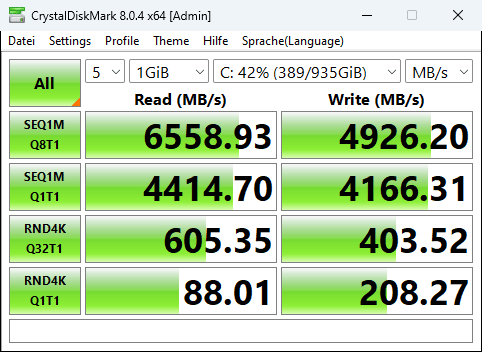
Games
Forza Horizon 5
In games, it also becomes apparent that the graphics card is the limiting factor in this setup. At least at the QHD resolution of the installed OLED panel and the maximum graphics settings of the games I tested. In Forza Horizon 5, the Razer Blade 15 achieves an average frame rate of 68 FPS under near full load on the GPU. CPU render and CPU simulation manage average FPS of 103 and 212, respectively. Nevertheless, I would classify Forza Horizon 5 as well playable on these settings. With an average of about 70 FPS, a relaxed racing game like Forza Horizon can be enjoyed reasonably. If you want to use the 240 Hz display to its full potential, you have to lower the graphics settings a bit. The game still looks great on “Medium” or “High”.
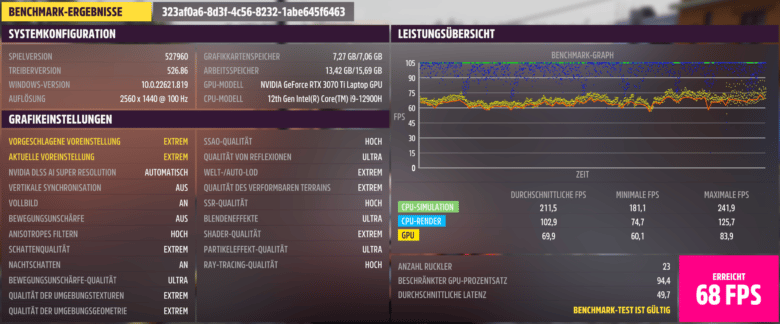
Cyberpunk 2077
Cyberpunk 2077 is one of the most hardware-intensive games on the market and puts the Razer Blade 15 under a bit more pressure. Among other things, also because of the partly poor optimization of the title. On the highest settings, only an average frame rate of 43.46 FPS, with short jerks down to 7.6 FPS in some cases, is possible here.

With these frame rates, a first-person shooter like Cyberpunk 2077 is not much fun. However, with a few adjustments to the rendering quality, this problem can also be solved and you can play the game smoothly, albeit with small compromises.
Screen
- OLED
- QHD
- 240 Hz
- 100% DCI-P3
The OLED screen on the Razer Blade 15 is simply fantastic. I haven’t seen a better combination of OLED, high refresh rate, and high resolution anywhere before – and in this form factor.
The surface of the screen is smooth and reflective unlike the majority of gaming monitors that have a matte finish. A smooth screen provides a clearer image as light is not refracted in a tangled manner by the flat surface, but can be very reflective in low light conditions such as direct sunlight. Personally, I like a screen with a smooth surface more, but the bottom line is that it comes down to individual preference.
Thanks to the high refresh rate of 240 Hz and the low input lag, which Razer states to be 1 ms, the gaming notebook is also equipped for the highest demands of e-sports gamers on the go with titles like CS:GO or Valorant.
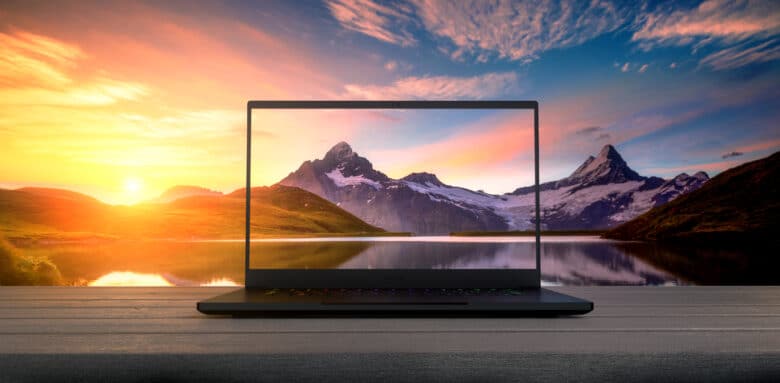
The built-in OLED panel supports 100% of the DCI-P3 color space, which could be an interesting feature especially for professional media designers. Besides creating media, consuming them on this screen is also a dream. Owners of an OLED display, such as an OLED TV, know how crisp the colors and blacks look on these screens. Therefore, you won’t get bored even during long Netflix sessions.
This screen can actually shine in any task area – be it gaming, image editing, video editing, etc. Of course, there are now also screens with 360+ Hz, but the difference is vanishingly small from this point on. On top of that, the picture quality on these monitors doesn’t come close to keeping up with an OLED panel like this one. The combination chosen here is truly breathtaking and it cannot be ignored that it is “only” a laptop screen. Comparable dedicated monitors have only recently been introduced by LG or Corsair and are not even available on the market yet.
Software
- Windows 11 Home
- Razer Synapse
- “THX Spacial Audio for PCs” app
The Razer Blade 15 ships with Windows 11 Home. Why they didn’t opt for Windows 11 Pro in this case isn’t entirely clear to me. Of course – if you only want to gamble on this laptop, then it makes no difference whether you use the Home or Pro variant. However, if you also want to use the laptop for work, university or school, then the features of the Pro variant might be necessary, depending on the application. The Home version lacks features like Hyper-V, remote access via RDP or encryption via Bitlocker. A device that is “Pro” in every other respect, including the price, could have also been given Windows 11 Pro, even if not every person would directly benefit from it.
Razer’s own “Razer Synapse” software is pre-installed on the Blade 15. With this software, the keyboard’s key mapping can be changed. The keyboard’s illumination as well as all other connected Razer accessories can be controlled here. The performance of the Razer Blade 15 can also be configured here. This includes the performance of the CPU and GPU, as well as the refresh rate of the built-in 240 Hz OLED screen.
Battery
- 80 Wh LiPo
- 6 hours battery life ± 1 hour
- 230 W charging via included AC adapter
- Up to 100 W charging via USB-C
As with most gaming laptops, the top-notch hardware inside is unfortunately a crux for battery life, as it requires more power than less powerful components even when performing less demanding tasks. Slowly, however, something is happening in this issue. Companies like Intel, for example, have started to develop new architectures that enable both high performance and high efficiency. The system with efficiency cores and performance cores is a start – but there is still room for improvement.

With its 80 Wh lithium-polymer battery, the Razer Blade 15 comes to me with a rough battery life of six hours ± one hour, depending on the day and usage. In my case, less gaming and more Google Chrome, Word, Excel, etc. on the go. Long and demanding gaming sessions, as well as other hardware-intensive programs, can of course shorten the battery life significantly.
With the included 230-watt power adapter, the Razer Blade 15 can be quickly brought back up to speed. You can get the laptop fully charged from 20% in just over an hour. With a USB-C PD power adapter, it takes a bit longer, depending on the power of the power adapter.
Conclusion
- High price due to latest display technologies (early adopter)
- Worth considering as an all-in-one device
- Comparable price to competitors
3699.99 € list price is a hefty claim. For that money, you can put together a very decent desktop PC, buy a used car, or much more. And notebooks, even gaming notebooks, are already available for much less. So what is the target audience of a device like the Razer Blade 15? The Blade 15 represents the absolute cutting edge of gaming notebooks, which wants to be at the forefront in every respect. Hardware, design, and display are among the best you can get at the moment. In addition to the gaming aspect, the grown-up design also makes it interesting as a high-performance work laptop for creative minds and computationally intensive tasks.
For users who want to get a gaming PC and a powerful laptop for work, university or school anyway, the Razer Blade 15 can be a financially sensible decision. With powerful hardware and high-tech features like the 240 Hz OLED screen, the Blade 15 is ready for the future and you save yourself the trouble of buying two different devices.
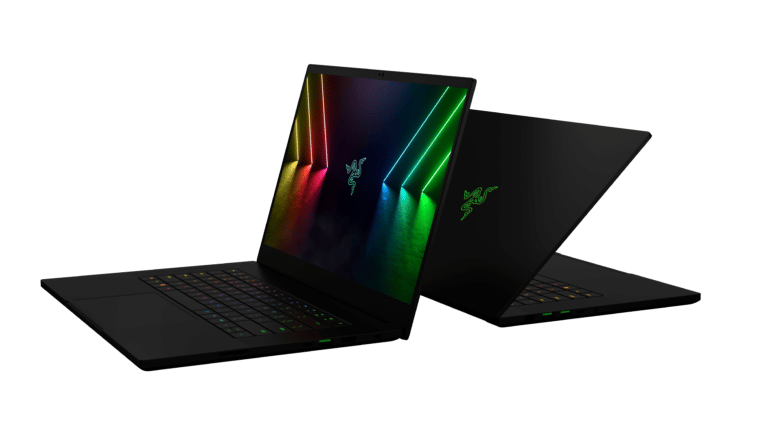
For gaming alone, the Razer Blade 15 is not a viable choice in most cases, as the premium for the internal hardware is huge compared to a desktop PC. However, the almost unique screen can be worth the premium. At the moment, however, you still have to pay the early-adopter price for it.
Compared to the other gaming notebooks that have a similar screen, such as MSI’s Raider GE67 HX, which is available at a price of €3000 – €5000 depending on the model, the price-performance ratio is okay.
Razer Blade 15 (240 Hz QHD OLED, i9-12900H, RTX 3070 Ti)
Design & workmanship
Input
Hardware
Performance
Display
Software
Battery
Value for money
90/100
Many devices that are called all-rounders are often all-rounders in the sense of "jack of all trades, master of none". The Razer Blade 5 is an all-rounder that plays at the top in every category. However, the price is also correspondingly high. The screen is the absolute highlight of this device, which also sets it apart from the other Blade 15 models.


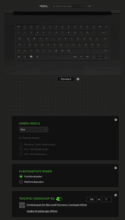
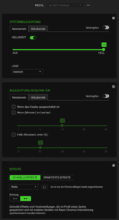
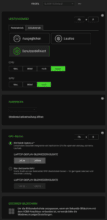




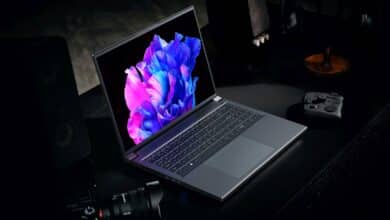
No replies yet
Neue Antworten laden...
Gehört zum Inventar
Beteilige dich an der Diskussion in der Basic Tutorials Community →